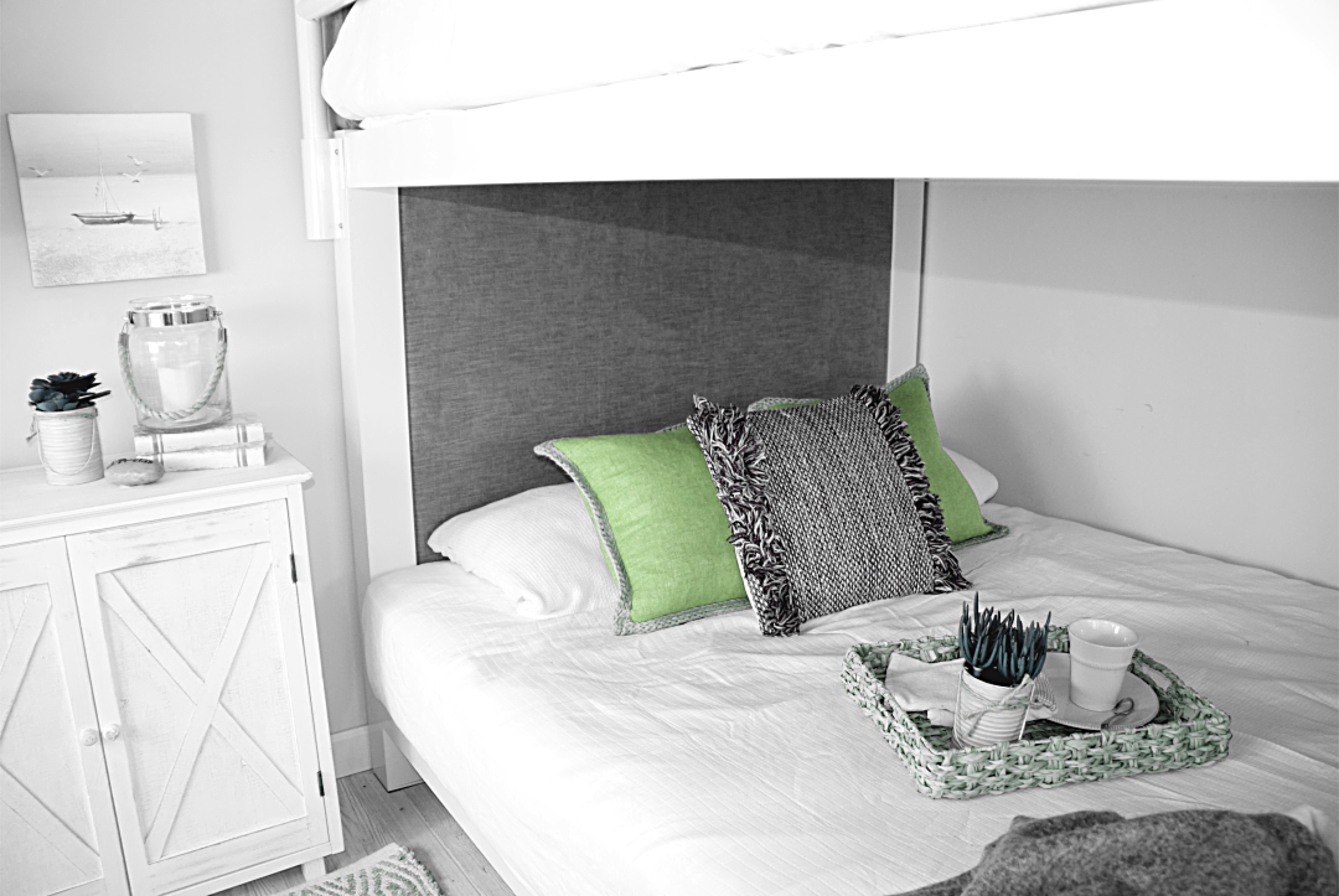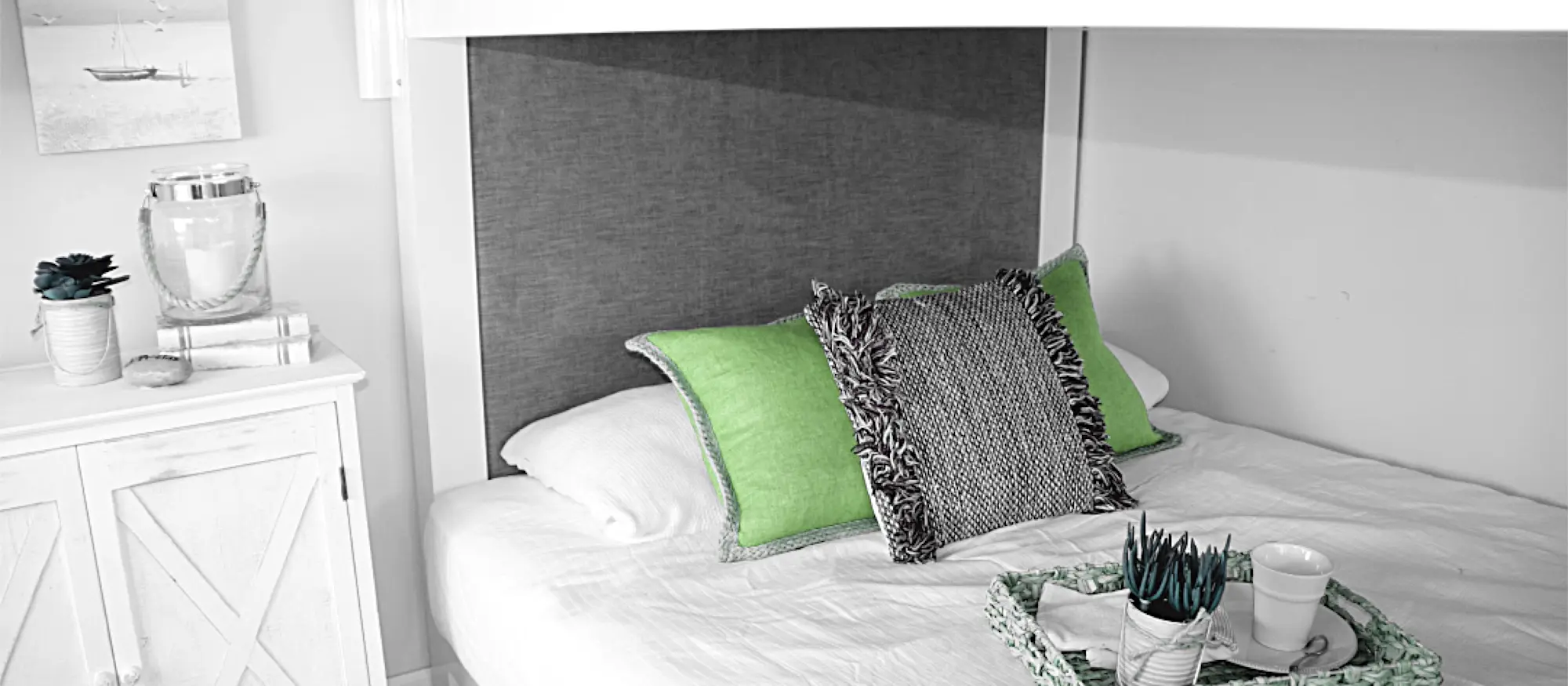
Like any major change, the thought of adapting to a “green lifestyle” can be overwhelming. Even if one acknowledges that it is an important thing to do, they may not know where to begin or how to maintain it in a long-term, permanent way, leading them to never attempt it in the first place.
But as is usually the case, breaking the project down to its component parts, making an actionable to-do list, and executing one task at a time can make a big change manageable. Rather than looking at it as an eco-friendly overhaul of your whole existence, turn it into a series of incremental adaptations that will slowly evolve the way you make decisions.
A helpful method for compartmentalizing this project is to transform one area of your home at a time. Since our speciality is, of course, the bedroom, we’re here to give you 8 helpful tips for making your bedroom more sustainable and eco-friendly.
Cut Out the Clutter
If you’re like me, the process of entropy seems to ensure that your bedroom will become a haven for all the extra clutter that you want to keep out of sight and out of mind. Unfortunately, excess bedding, unused clothing, and old, unnecessary paperwork isn’t exactly eco-friendly. Before you can create a truly green room, you need to get rid of things that are just taking up space. Recycle any non-essential papers, magazines, etc. and get rid of excess bedding or old clothes by donating them to a thrift store or hosting or attending a neighborhood swap. If these materials are in no shape to be reused by living human beings, this helpful guide will assist you in finding local spots where you can donate your old textiles to be repurposed. While you’re in Declutter Mode, consider the ways that an adult loft bed can help you declutter and use your bedroom space more effectively.
Check Your Windows
Now that you’ve gotten rid of excess mess, you can begin to make some more thorough and lasting changes to your bedroom. The best place to start is with your windows, the direct link between your bedroom and the big world outside. First, check the seals on your windows to ensure that they’re installed correctly and working properly. Leaky seals mean that any air inside your home is going to be shared with the rest of the world, causing you to use excess heating or air conditioning, which wastes energy and costs you money. Once you’ve confirmed your seals are tight, consider dressing your window in insulated, eco-friendly curtains or blinds (or both) designed to retain the air inside the home, compounding the effect of the seals to ensure that you’re using energy as efficiently as possible (and that you are always in control of the temperature in your bedroom).
Be Smart with LED Lighting
Personally, I prefer to use windows and natural lighting over artificial electrical lighting as much as possible, but living in Chicago, I know that this is easier said than done in many cases. Window size and location — not to mention the weather — can make it difficult to provide certain rooms with a sufficient amount of natural light. But you can still go green by simply using LED lightbulbs, which use less energy and last longer than incandescent or CFL bulbs. And of course, always be sure to turn the lights off whenever you’re not in the room.
Sleep Safer with an All-Natural Mattress
Did you know that certain mattresses are more eco-friendly (and safer) than others? See, most mattresses are flame retardant, meaning they’re treated with materials that can take a toll on your health and the environment. Many companies provide all-natural counterparts for those looking for a healthier and more sustainable mattress option. These are usually made of latex, wool, cotton, hemp, or bamboo. The Avocado Green Mattress is possibly the most popular eco-friendly mattress on the market, but Tuft & Needle, Earthsake, and Saatva also offer quality options at varying prices.
Don’t Forget the Organic Bedding
The same principle as the eco-friendly mattresses applies here. Bedding made of all-natural, non-toxic materials not only comes with a smaller carbon footprint, but also the peace of mind of knowing that you’re not spending your night sleeping on or under potentially hazardous compounds. Bamboo is a common source material for many of these products, largely because it is so soft and comfortable. But if you’re looking to go with a more conventional approach for your blankets and bedding, try to get items made of 100% cotton. Stain resistant, no-iron, or flame retardant bedding should be avoided.
Purify the Air
There’s no better indicator of an eco-friendly space than clean, crisp, fresh air. This is obviously especially important in your bedroom, where you will usually spend at least 8 hours a day, every day. One relatively simple and low-cost way to do this is to invest in an air purifier, which is designed to absorb and filter out harmful toxins and allergens from the air (I guess the name is pretty self-explanatory, eh?). This can have drastic positive effects on your long-term health, and is especially important for homes with babies or small children whose lungs are still developing. Of course, a portable air purifier will add to your home’s overall energy usage, so remember to keep it shut off when you’re not actually occupying the bedroom. If your home is big enough to justify the investment, consider getting a centralized air purifier, which won’t use as much energy overall.
Shop for Second Hand Furniture
A great way to be eco-friendly and find some cool, unique furniture for your bedroom space is to shop for second hand or used items. Not only will you be practicing one of the Three Rs by reusing perfectly good furniture, but it will give you the chance to be creative and flex your interior design skills. Plus, it will probably be more cost-effective than buying something new (especially if you’re a good haggler).
Green Cleaning
Now that you’ve done all of this hard work to create a green, sustainable bedroom space, keep that momentum going by switching to all-natural, eco-friendly cleaning products (like those offered by Mrs. Meyers or method) to keep your room looking, smelling, and feeling great. Not only are these cleaning products better for the environment, but they’re safer for you and your family, since they eliminate unnecessary exposure to potentially hazardous chemicals and toxins.You can also make your own, usually using a collection of ingredients as simple as just vinegar, water, baking soda, and maybe some essential oils (for that fresh clean scent).
The bedroom is an important fixture and very personal space for most people, which makes it an ideal place to start building a healthier, greener lifestyle.
